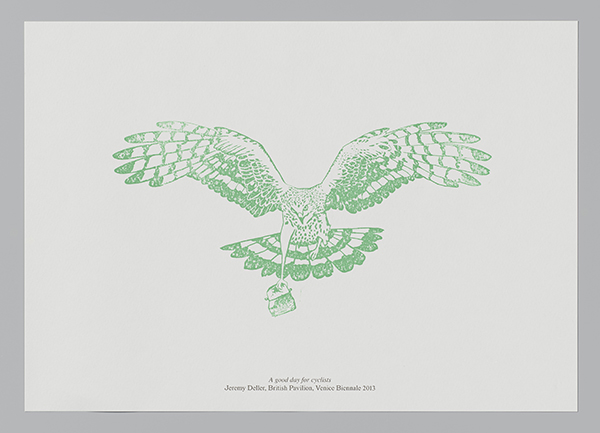
July 4–October 14, 2019
History of the Venice Biennale
Jeremy Deller (British; b. London, 1966), print from English Magic, British Pavilion of the 55th Venice Biennale, 2013. 8 1/4 × 11 5/8 in. Clark Art Institute Library, Venice Biennale Ephemera Collection
The Venice Biennale, inaugurated in 1895, was the first recurring exhibition of the type we now call a “biennial.” It has been international since the beginning. In 1907, Biennale authorities allowed Belgium to construct the first permanent home for its exhibiting artists. Perhaps inspired by the Rue des Nations at the Paris Expositions of 1889 and 1900, within a decade most major European and North American powers had followed suit. Today, twenty-nine national pavilions fill the Giardini, formal gardens in the eastern part of the city, and dozens more occupy rented palazzi and other buildings.
A period of cosmopolitan expansiveness followed a brief hiatus during World War II. In those mid-century decades, the Biennale model began, haltingly, to be copied around the world; São Paulo, for example, launched its own biennial in 1951.
The changes that give us today’s Venice Biennale began in the mid-1970s, when the committee that oversees the exhibition initiated overarching themes for each edition. A decade later, its members began appointing an artistic director from among the increasingly professionalized field of curators. The artistic director is responsible for a thematic exhibition installed in the Giardini’s Central Pavilion (once the Italian Pavilion) and, since the 1990s, in the Arsenale, an adjacent and enormous shipyard complex that had long been used to build Venice’s commercial and military fleets.
In 2007, New York Times critic Holland Cotter observed, “The Biennale is as much an archipelago of islands as Venice itself.”

